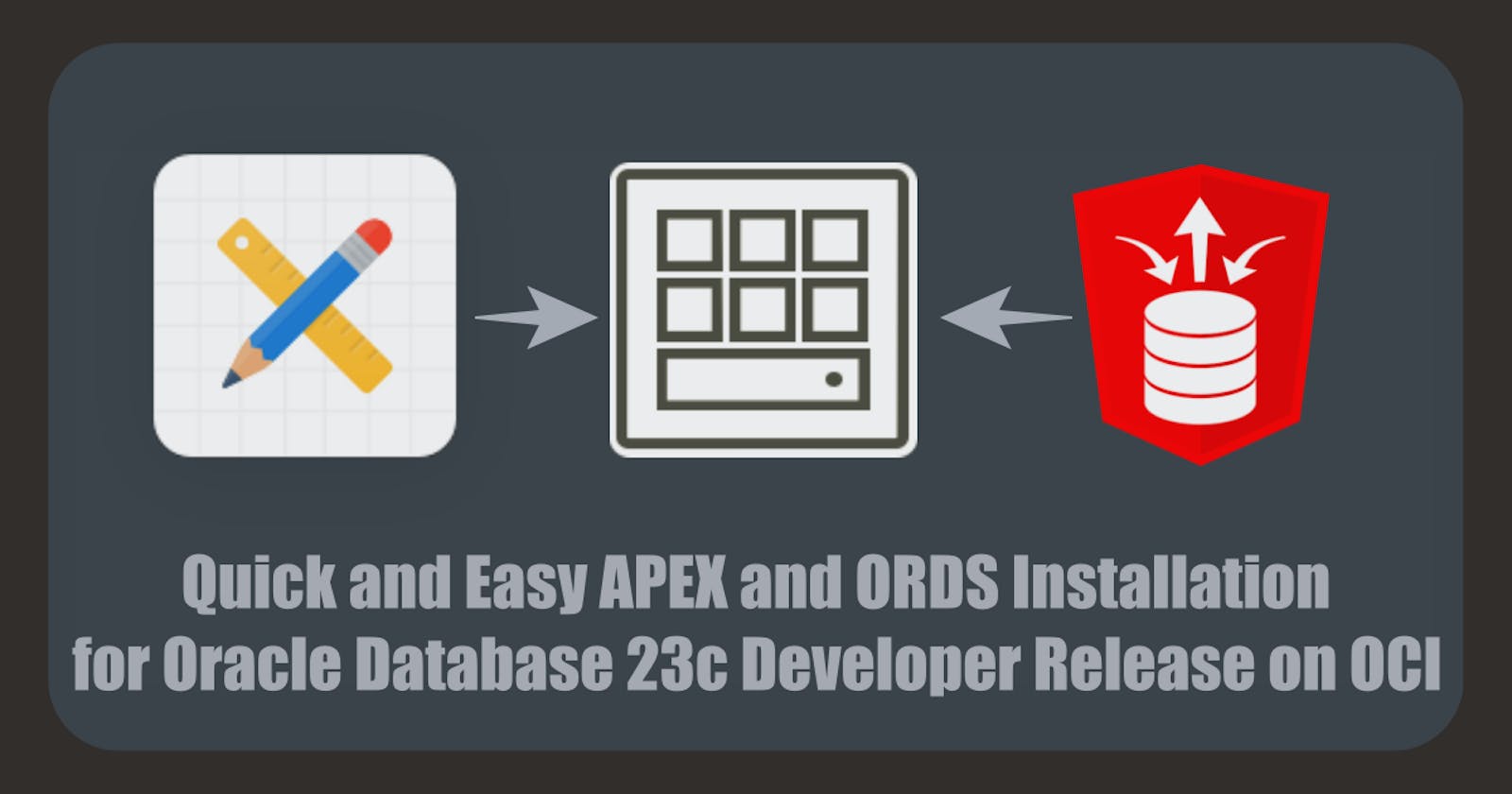Quick and Easy APEX and ORDS Installation for Oracle Database 23c Developer Release on OCI
Introduction
Are you ready to take your Oracle Database 23c experience to the next level?
In this article, we'll guide you through the simple steps to install APEX and ORDS for Oracle Database 23c on Oracle Linux 8 in the Oracle Cloud Infrastructure (OCI). With these powerful tools, you'll be able to unlock the full potential of your database and explore the amazing world of APEX and SQL-Developer Web. So let's get started!
Prerequisites for Installing ORDS and APEX
In order to successfully install ORDS (Oracle REST Data Services) and APEX (Oracle Application Express) for Oracle Database 23c on Oracle Linux 8 within the Oracle Cloud Infrastructure (OCI), it is essential to have a Compute instance running with a fully operational Oracle Database. If you haven't already configured this setup, we've got you covered with a comprehensive guide on how to accomplish this task. Just follow the link provided here to read the step-by-step process and get your Oracle Database up and running on a Compute instance within OCI.
Install Oracle APEX
In this section, we will guide you through the process of setting up Oracle Application Express (APEX). So, let's dive into the process of installing Oracle APEX.
First, log in to your compute instance using your preferred method, whether it be through a remote desktop connection or a terminal. Once you have successfully accessed your instance, download the latest Oracle APEX package by running the following command:
cd /home/oracle/
wget https://download.oracle.com/otn_software/apex/apex-latest.zip
Next, extract the downloaded package using the following command:
unzip apex-latest.zip
Navigate to the extracted apex directory by executing the following command:
cd apex
Connect to your Oracle Database as a sysdba user by executing the command below:
sqlplus sys@localhost:1521/FREEPDB1 as sysdba
Note: It's recommended to install APEX in a pluggable database!
Execute the apexins.sql script to install Oracle APEX using the following command:
@apexins.sql SYSAUX SYSAUX TEMP /i/
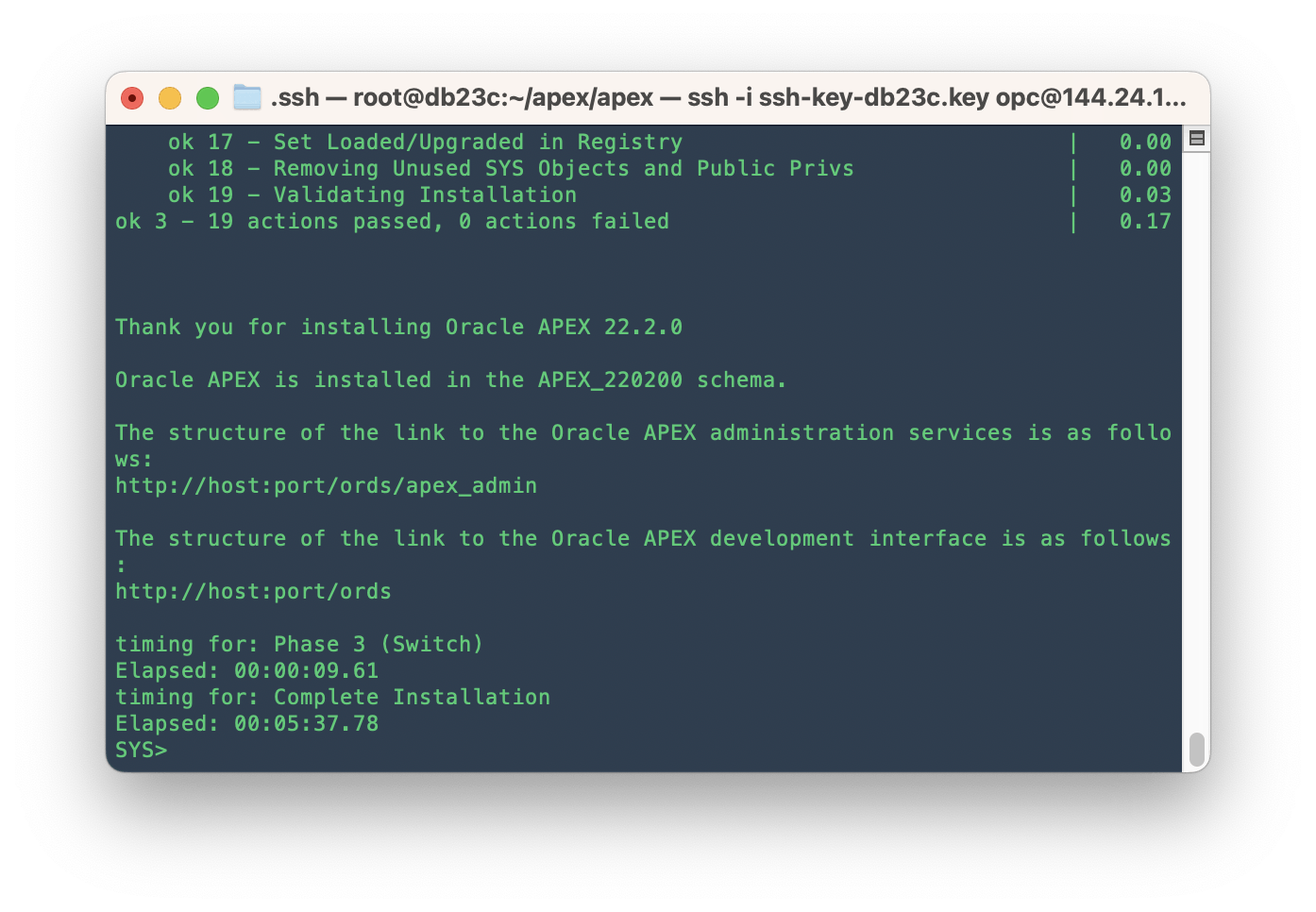
Run the apxchpwd.sql script to change the APEX administrator password:
@apxchpwd.sql
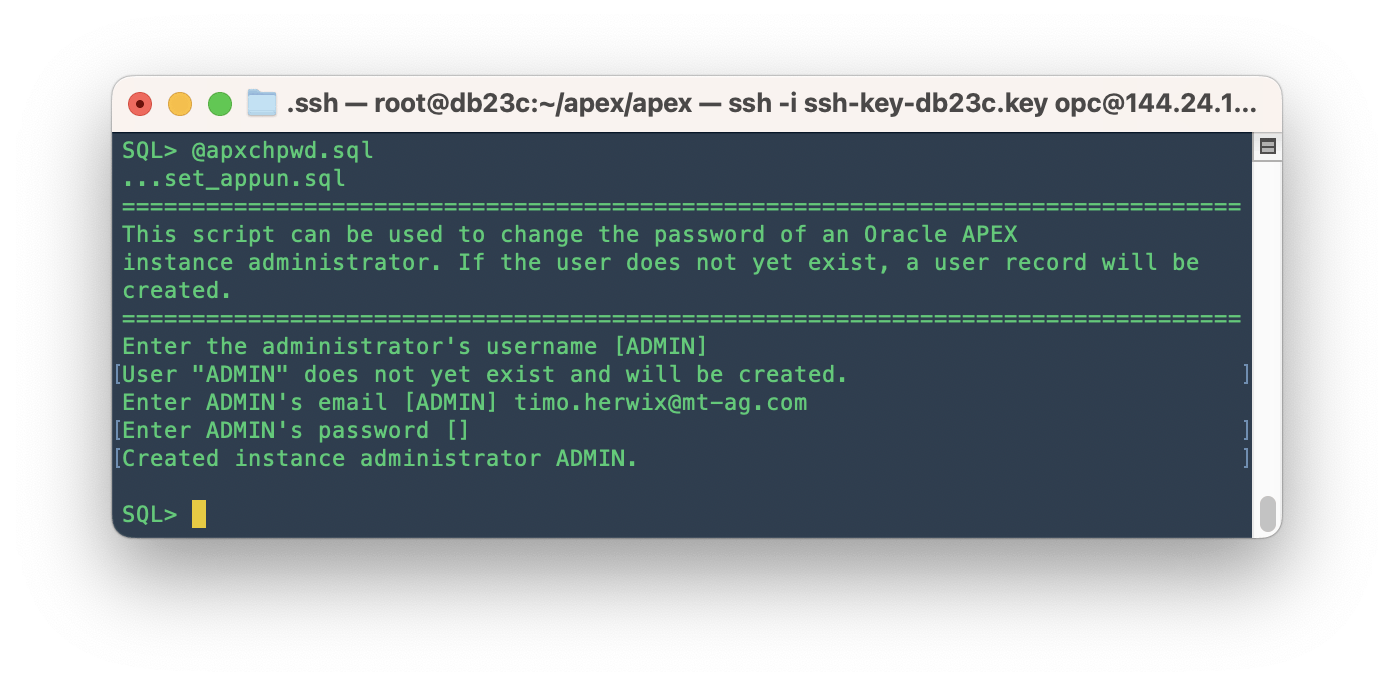
Unlock the APEX_PUBLIC_USER account and set a new password using the following commands:
ALTER USER APEX_PUBLIC_USER ACCOUNT UNLOCK;
ALTER USER APEX_PUBLIC_USER IDENTIFIED BY <password>;
Finally, configure APEX RESTful services by executing the apex_rest_config.sql script:
@apex_rest_config.sql
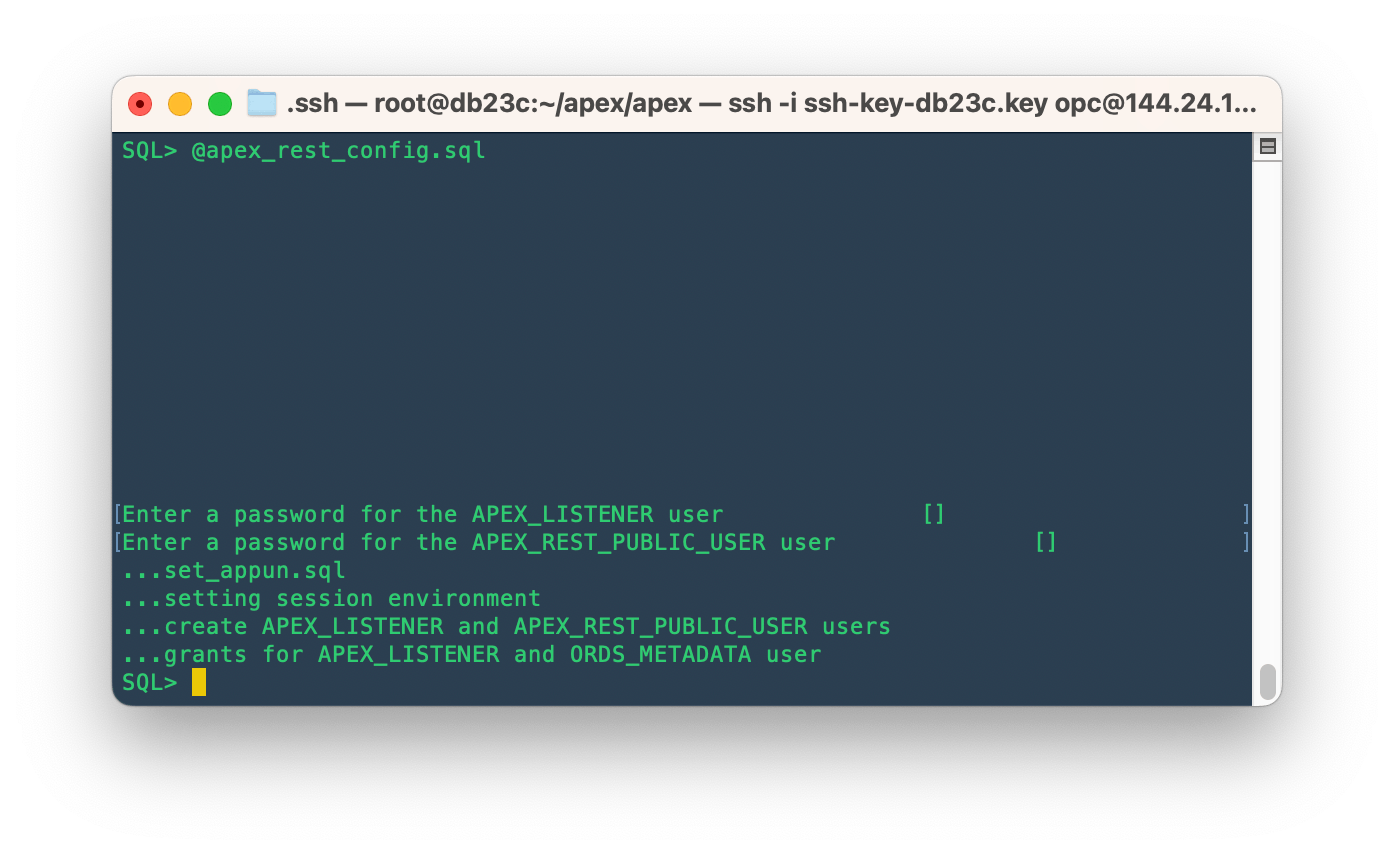
Congratulations! You have successfully set up Oracle APEX on your OCI Compute instance.
Easy Peasy Installation of ORDS
The Oracle REST Data Services (ORDS) can be found in both the Oracle Linux 7 (OL7) and Oracle Linux 8 (OL8) repositories. As we have already enabled the appropriate repository in our previous blog post, the installation process for ORDS becomes quite straightforward. You can effortlessly install ORDS by using either the yum or dnf package manager, depending on your system's preference.
First, log in to your compute instance using your preferred method, whether it be through a remote desktop connection or a terminal. Once you have successfully accessed your instance, you will need to switch to the root user.
Optional: Install Java 17
Before proceeding, it's essential to ensure that your system has Java 11 or a higher version installed. If not, install Java using the following commands:
wget https://download.oracle.com/java/17/archive/jdk-17.0.6_linux-x64_bin.rpm
yum -y install jdk-17.0.6_linux-x64_bin.rpm
Verify your Java version.
java -version

Install ORDS
Next, execute the command below, which will initiate the installation process for ORDS.
yum install ords -y

Once the installation is finished, you can begin configuring and using ORDS.
ords --config /etc/ords/config install
You'll be asked a few questions, so just go ahead and answer them. No worries, you can likely press Enter/Return for most of them to accept the default options.
Type of installation > [2] Enter
Database connection type > [1] Enter
Host name > [localhost] Enter
Listen port > [1521] Enter
Service name > FREEPDB1
Administrator username > sys
Password >
Default tablespace > [SYSAUX] Enter
Temp tablespace > [TEMP] Enter
Additional features > [1] Enter
Start ORDS in standalone mode > [1] Enter
Protocol > [HTTP] Enter
Port > [8080] Enter
Static Resources > /home/oracle/apex/images
ORDS is about to do its magic and take care of the installation tasks for us! Just a heads up, there's going to be quite a bit of scrolling on the screen. But don't worry, when it's all done, we'll have something that looks pretty close to this.

It is recommended to deploy ORDS directly into each PDB in most cases. This way, you can handle your database connection pools one by one. Plus, with PDB-level installs, you can run various ORDS versions in the same CDB or even have different configurations and options enabled. So, in a nutshell, PDB installs provide the most flexibility.
Once everything is complete, start ORDS using the command below.
/etc/init.d/ords start

Setting Up the Firewall
At last, we need to configure the firewall to permit incoming connections. To accomplish this, execute the commands below.
firewall-cmd --permanent --zone=public --add-port=1521/tcp
firewall-cmd --permanent --zone=public --add-port=8080/tcp
firewall-cmd --reload
Next, we need to update the Ingress Rules for the VCN to allow incoming HTTP traffic. So it is not enough to open the VM's firewall.

The final Test
With the setup now complete, you have the ability to access APEX or SQL-Developer Web by using the Compute instance's IP address, along with the assigned port 8080.
http://130.61.255.134:8080/ords
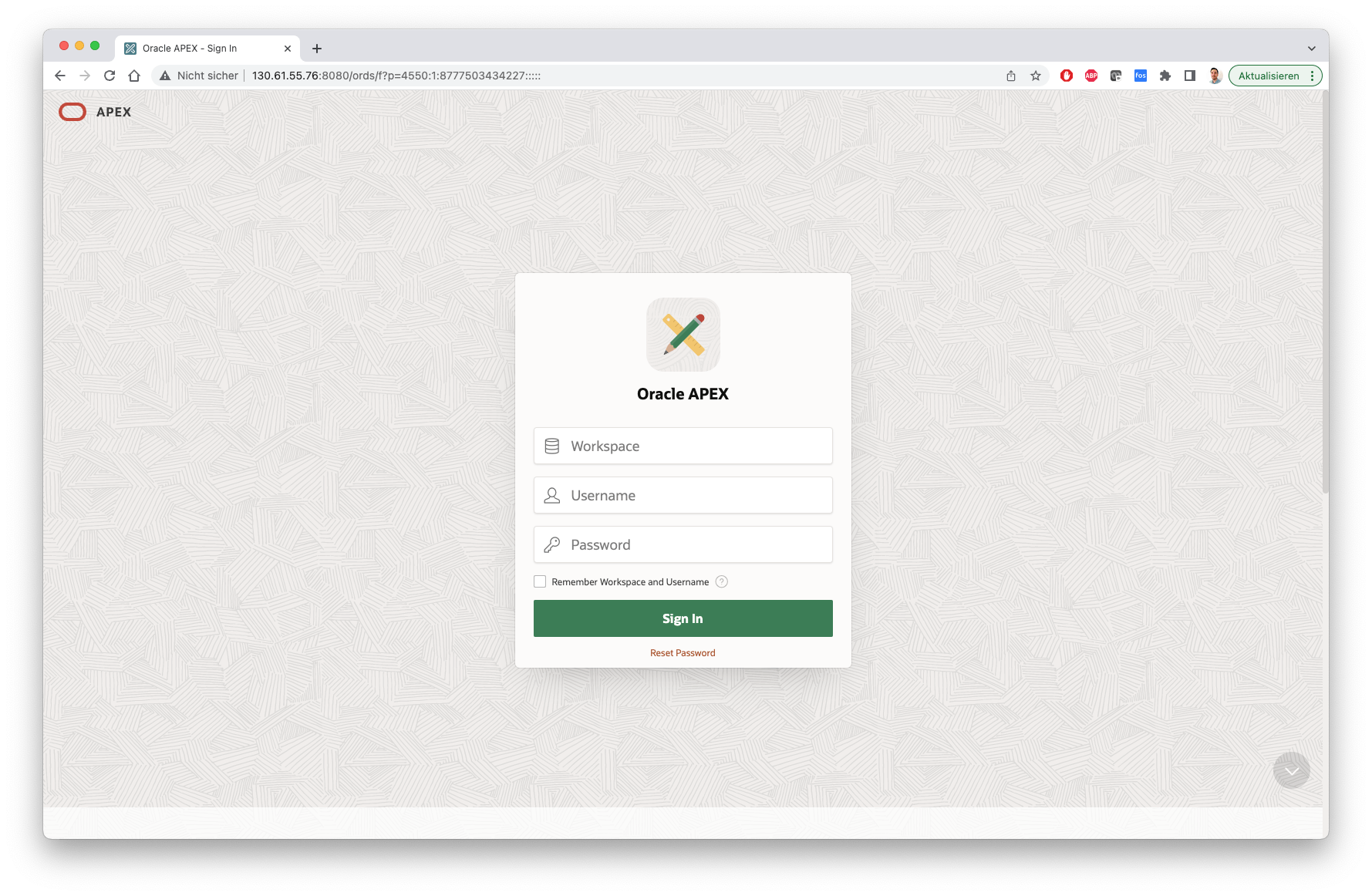
http://130.61.255.134:8080/ords/sql-developer
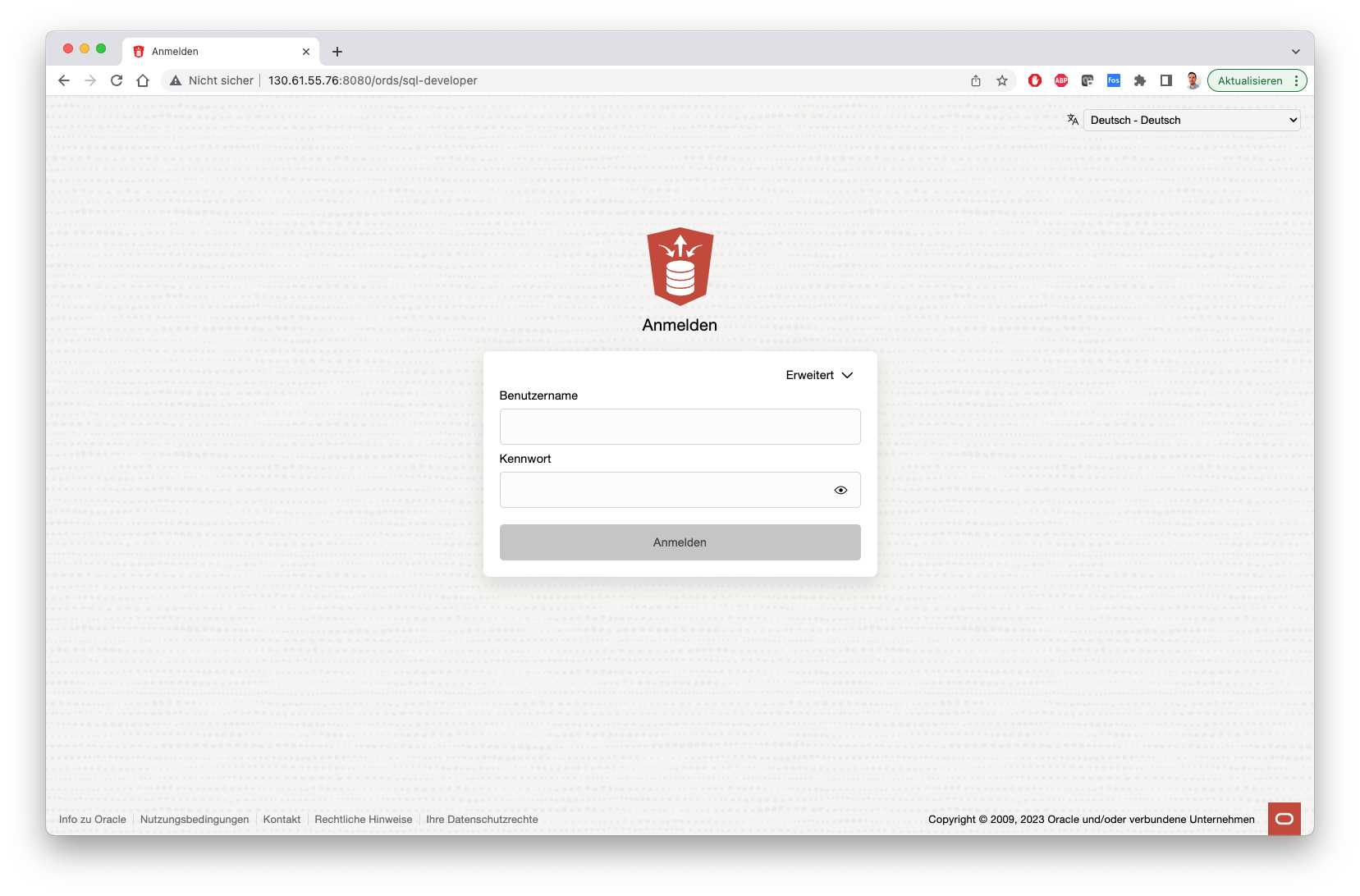
Woohoo! Get ready to explore the amazing world of APEX and SQL-Developer Web!
Conclusion
In conclusion, installing ORDS and APEX for Oracle Database 23c on Oracle Linux 8 in OCI is a simple process as long as you have met the prerequisites and followed the steps outlined in this article. By utilizing the yum or dnf package manager to install ORDS, configuring the firewall to allow incoming connections, and updating the Ingress Rules for the VCN to allow incoming HTTP traffic, you can easily access ORDS and APEX. With these tools at your disposal, you can take your Oracle Database 23c to the next level and unlock its full potential.

